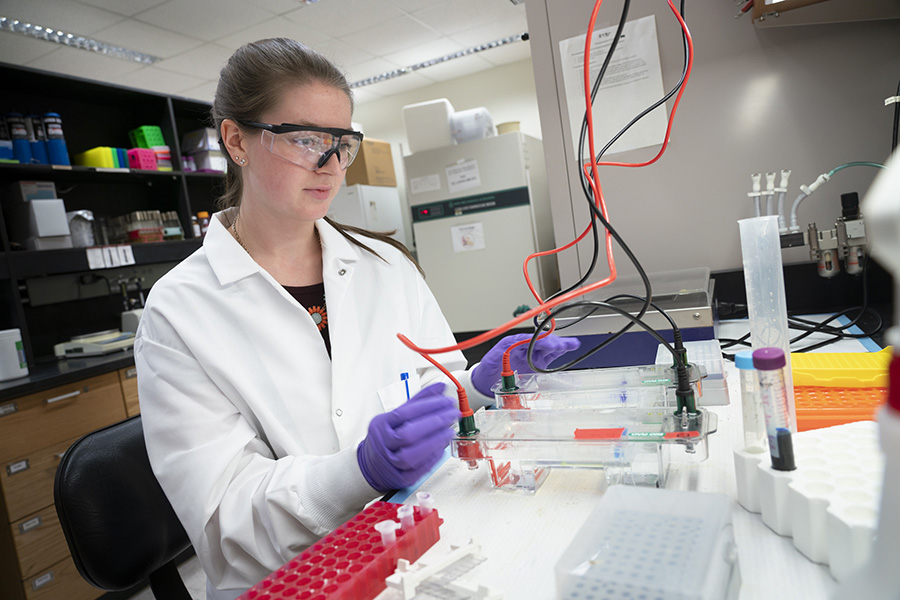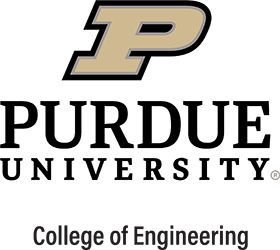Ph.D. Student Attacks Arthritis at Forefront of Inflammation Research
Some 30 million Americans are battling the ravages of osteoarthritis-a wearing-down of protective cartilage and a crippling threat to joints in the hands, knees, and hips. Tissue engineers pursuing strategies to regenerate the damaged cartilage may benefit from new insights into inflammation-a phenomenon increasingly understood as a factor in many arenas of medical care. This is an area of research where chemical engineers like Carly Battistoni can provide fresh, dynamic results for practitioners and patients alike.

Battistoni, a Purdue student in her second year of Chemical Engineering Ph.D. studies, has received a Leslie Bottorff Fellowship to advance her collaborative approach to osteoarthritis. That work is centered in a laboratory led by Dr. Julie C. Liu, an expert on tissue engineering and biomaterials in the University's Weldon School of Biomedical Engineering and Davidson School of Chemical Engineering. With Liu as her research advisor, Battistoni is helping to probe contexts for understanding the progression of inflammation and improved interventions against it.
"Regenerating cartilage in an environment of inflammation is different from treatment under ideal conditions," Battistoni explains. Inflammation is now seen as a key factor behind cartilage degradation, she says, but there is currently no "gold-standard model" outlining its role in the process. "We're asking the questions, why have the tissue engineering efforts failed? What can we do to make them more efficacious? We’re looking to shed new light on the problems of the past."
Battistoni investigates the properties of extracellular matrix molecules when they’re incorporated into a collagen-blend scaffold for tissue engineering. She systematically evaluates different formulations of matrix components, including hyaluronic acid and chondroitin sulfate, seeking an optimal combination within a blended collagen hydrogel. The hydrogels will then be evaluated in a rabbit model in collaboration with Purdue's College of Veterinary Medicine.
This research involves extensive collaboration within that college as well as the Weldon School and the School of Materials Engineering. It also entails increased engagement with Indiana University School of Medicine, tapping into extensive knowledge of osteoarthritis in humans. Battistoni has begun meetings with her clinical mentor, orthopedic surgeon Dr. Stephen Trippel, and plans to make hospital visits to learn about patients’ experiences and the pluses and minuses already seen in tissue engineering and stem cell therapies.
"Engineers are about the end-goal," Battistoni says, so she looks forward to the direct interactions that reaffirm the sense of purpose behind her lab work. She relishes research—three years of which still await her as a student—that initiates ideas but also reacts directly to everyday clinical needs.
She also values the collaboration with experts in different fields because each person "makes you see things in different ways and approach a problem in a different way" That's an advantage of the interdisciplinary spirit she has found in the Biomedical Engineering Ph.D. program established by the Purdue College of Engineering in partnership with IU School of Medicine. For example, she will pursue conversations with multiple medical experts because her fellowship program affords her "an open path" to IU resources, as well as financial support to attend "translational" conferences where engineering-related research and medical-practice knowhow are being shared at the state and national levels.
This pursuit holds true to her combination of chemical and biomolecular engineering degree studies as an undergraduate and to her own personal interests, which led her to an internship at a pharmaceutical company before beginning her graduate work. She anticipates a career in research and development in the pharmaceutical industry because it will connect her love of research to direct benefits for patients.
The patient connection goes hand-in-hand with her personality and her extracurricular activities.
"I like interaction with people, making their lives easier," Battistoni says. She has demonstrated this as a representative for the chemical engineering graduate student organization on campus, where she can be a voice for problem-solving on issues of concern to the students.
Her instinct for responding to important human needs drew her to osteoarthritis research. "I can see the direct application and motivation of it," she says. "At the end of the day I can see it being beneficial to people." The Leslie Bottorff fellowship will support her in maximizing the effectiveness of her research by connecting it to clinical experiences and needs and, ultimately, to those suffering from immobility and pain.
"This Leslie Bottorff Fellowship Program helps reinforce that motivation-the end-consumer, whom I do all this research for."


